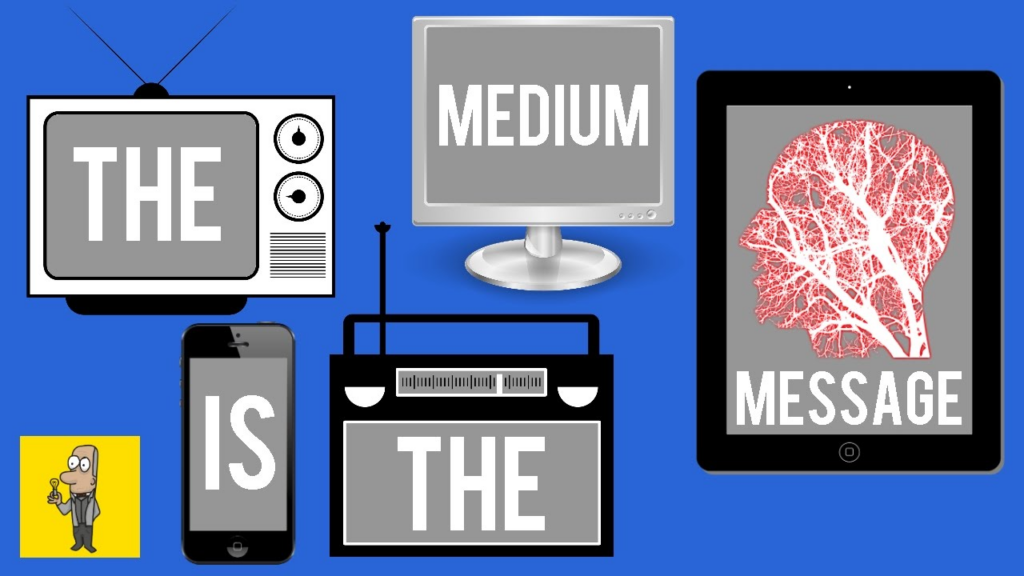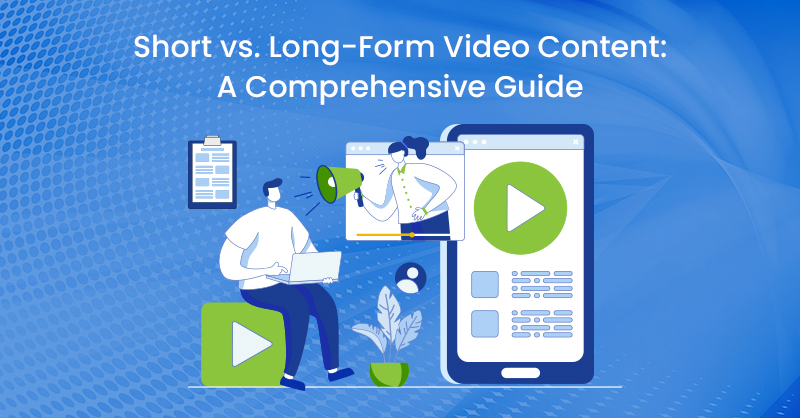In the dynamic world of social media marketing, the choice between short-form and long-form content is pivotal for brand success. Short-form video platforms, such as Instagram Reels and TikTok videos, offers quick, engaging snippets that capture the audience’s attention in seconds, making it ideal for viral marketing campaigns and rapid brand awareness. On the other hand, long-form video content, like YouTube videos, podcasts, and live-streaming sessions, allows brands to delve deeper into storytelling, providing valuable information and building stronger, more meaningful connections with their audience by fostering a community.
As we navigate this blog, we’ll uncover the distinct advantages of each content format and explore the platforms that best support them. We’ll discuss how to repurpose content for maximum reach, leveraging tools like Instagram Reels, TikTok, and various software to optimize performance. We’ll also examine how evolving algorithms and AI are influencing content strategies, and the role of affiliate marketing in driving revenue and incentivizing consumers.
By understanding and utilizing these insights, marketers can craft compelling campaigns that resonate across different media, ultimately enhancing brand visibility and engagement.
Size Matters
Short-form and long-form video content serve distinct purposes and yield different results in social media marketing.
Short-form video content, typically under a minute, is perfect for capturing immediate attention and driving quick engagement. Platforms like TikTok and Instagram Reels thrive on this format, where brevity and creativity are key. This type of content is particularly effective for brand awareness campaigns, product teasers, and viral challenges. It relies on the fast-paced consumption habits of modern audiences, making it ideal for reaching a wide audience quickly. The downside to this approach is that this type of engagement can be fleeting and not sustainable for the long term.
In contrast, long-form content provides a richer, more immersive experience. YouTube videos, podcasts, and live streams allow marketers to delve deeper into topics, offering detailed product reviews, tutorials, and behind-the-scenes content. This format fosters a sense of community and loyalty among viewers, as it provides value and builds trust over time. Long-form video content is crucial for educational content, tutorials, in-depth storytelling, and establishing thought leadership in a particular niche.
The negative aspect of long-form video content is that since it is a long-term approach, it doesn’t often see a quick return on investment. Rather, communities and brand loyalty are built over a period of time.
For marketers, understanding these differences is essential. Short-form video content can drive rapid spikes in engagement and visibility, while long-form content builds a sustained, loyal audience. A balanced strategy that leverages both formats can maximize reach and impact, ensuring a comprehensive approach to audience engagement and brand building.
The Medium is the Message
“The Medium is the message,” a phrase coined by Canadian philosopher Marshall McLuhan, suggests that the way information is transmitted (the medium) is more significant than the actual content of the information (the message). McLuhan argued that the medium influences how the message is perceived and understood, and it shapes and controls the scale and form of human association and action. This is important to consider in social media marketing, as the message you are delivering can be coded differently based on the medium.
Different mediums and formats effectively utilize both short and long-form video content, each serving unique marketing purposes, and some of them are capable of both. Platforms like TikTok and Instagram are ideal for short-form content, with features like Instagram Reels and TikTok’s native video tools, allowing brands to create engaging, bite-sized videos. These short-form video platforms are perfect for quick updates, product launches, and viral challenges that drive immediate user interaction. #YouTubeShorts also capitalizes on this trend, offering a way for creators to produce short, captivating videos that can attract a large audience quickly.

Source: YouTube
How Video Content Generates Revenue
YouTube and podcasting excel in long-form content. YouTube’s extended video format supports in-depth tutorials, comprehensive reviews, and detailed storytelling, allowing brands to build a strong connection with their audience.
Longer videos on YouTube provide more opportunities for ad placements, including pre-roll, mid-roll, and post-roll ads. This increased ad inventory allows creators to earn more revenue per video. Additionally, longer watch times and higher audience retention are crucial because they signal to YouTube’s algorithm that the content is engaging, which can lead to better visibility and promotion within the platform. Higher engagement and longer watch durations not only generate more ad impressions but also enhance overall ad revenue due to increased viewer interaction with ads.
Podcasts provide an audio platform for lengthy discussions, interviews, and narrative content, perfect for listeners seeking in-depth information and entertainment during commutes or workouts. This allows for some of the most effective types of advertising, due to the audience’s loyalty and trust in that brand, such as baked-in ads.
Baked-in ads in podcasting are integrated directly into the podcast episode, making them a permanent part of the content. These ads are often read by the host, creating a more personal and engaging experience for listeners. They are expensive because they offer long-term exposure, as the ad remains in the episode indefinitely, and they leverage the trust and connection between the host and the audience, leading to higher listener engagement and effectiveness.
Live Streaming and Steamers
Live-streaming platforms like Twitch, Kick, and Rumble offer another dimension, blending both short and long-form video content. Streamers can engage viewers in real-time with long-form content, such as gaming sessions, Q&A’s, and live events; many streamers utilize marathon events where they stream for entire days at a time without any stoppage.
Inversely, streamers also create highlights and short clips for quick consumption and social media sharing. By strategically utilizing these platforms, marketers can create a dynamic content mix that caters to varied audience preferences, enhancing engagement and brand loyalty.
Streamers make money through subscriptions, donations, ad revenue, sponsorships, and merchandise sales. Subscribers pay a monthly fee for exclusive content and benefits, while donations (often through platforms like Twitch Bits) allow fans to support streamers directly. Ad revenue comes from commercials played during streams, and sponsorships involve brand deals and partnerships. Merchandise sales, like branded apparel, also contribute.
Streaming platforms like Twitch, Kick, and Rumble have helped turn streaming into a $60 billion industry, highlighting the significant economic impact and popularity of live-streaming.

Source: Tuberanker
How AI Affects Short and Long Form Video Content
AI is revolutionizing both short-form and long-form video content creation by streamlining and enhancing the editing process. Softwares like Opus can extract highlights from lengthy recordings, making it easier to produce engaging short clips for short-form video platforms like TikTok and Instagram Reels. Tools such as Descript offer auto-generated captions, improving accessibility and SEO. Plugins like AutoPod can handle multi-cam editing for lengthy videos in seconds, significantly reducing editing time for YouTube creators.
AI-driven tools not only save time but also ensure a higher level of precision and consistency in video production. The ability to quickly edit and repurpose content across different formats and platforms allows marketers to maximize reach and engagement.
As algorithms increasingly favour content that keeps viewers engaged, the efficiency provided by AI tools becomes even more critical in maintaining a competitive edge in the fast-paced digital landscape. By leveraging these technologies, marketers can focus more on creative strategy and less on time-consuming editing tasks, ultimately driving higher ad revenue and audience retention.
Conclusion
The landscape of social media marketing thrives on a balanced approach to short-form and long-form content, each serving unique strategic purposes.
Short-form video content captures immediate attention and drives quick engagement, making it ideal for viral marketing and brand awareness. In contrast, long-form content fosters deeper connections through detailed storytelling and valuable information, essential for building a loyal community over time. By understanding and leveraging the strengths of each format, marketers can craft comprehensive campaigns that maximize reach and impact.
Additionally, the integration of AI tools revolutionizes content creation and optimization, allowing marketers to streamline processes and enhance engagement.
As the digital world continues to evolve, staying adaptable and innovative will be key to maintaining a competitive edge and achieving sustained success in social media marketing.




